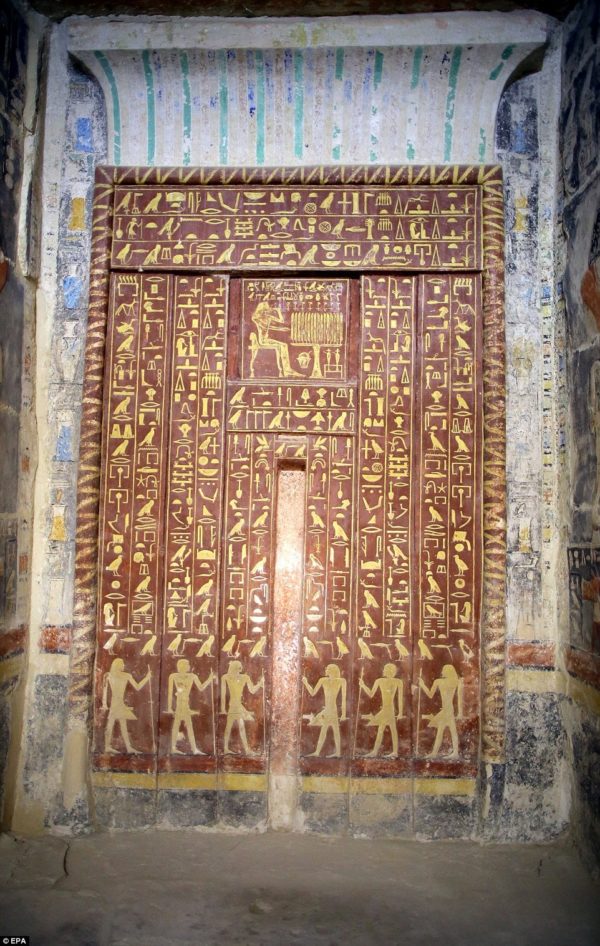It’s been nearly 80 years since travelers could set foot in what’s described as Egypt’s most beautiful ancient tombs. Now, the tombs of Mehu are re-open to the public for the first time since their discovery by Egyptologist Zaki Saad in 1940.
According to Daily Mail, Mehu’s sprawling tombs are located in the vast burial grounds of Saaqara, Egypt and is considered one of the most breathtaking tombs at the site. The burial ground was restored by the Egyptian Ministry of Antiques, which reinstated the paintings pictured on the walls of the chambers.

Image courtesy of EPA.
“It’s a 4500-year old tomb from the 6th dynasty,” said Mostafa Al-Waziri, head of the Supreme Council of Antiquities.
A report by the Mirror U.K. suggests officials decided to open the Giza tomb as part of a bid to boost tourism in the country after dwindling visitor numbers following the Arab Spring of 2010.
As a vizier or the highest ranking member of Pharoah’s royal court, Mehu was a prominent figure in Egyptian society at the time. Egyptology estimates that he lived around 2300 BC and was most known for his colossal tomb, which features drawings of him hunting in the jungle and on fishing expeditions. The murals also depict daily life of civilians harvesting, cooking and even dancing.
“These sorts of paintings were not used in the Saqqara tombs before the Sixth Dynasty of Egypt,” the Daily Mail reported. “The burial chamber, antechamber and entrance corridor of these pyramids are inscribed with Pyramid Texts, following the example set by Unas of the Fifth Dynasty.”
Mehu’s family history is also shrouded in mystery, although it’s believed he had two wives, Nebet and Neferkaus, and several sons who are referenced in the tomb paintings. His tomb is also closely situated to the Pyramid of Unas, which holds the ninth and last ruler of Egypt’s Old Kingdom.
Historical documents suggest Mehu likely served King Teti, while others show he served later during the reign of King Pepy I.
“It is during the King Pepi rule, ” Al-Waziri continued. “It is a family tomb of a father, son and grandson. “We’re seeing Mehu, his son Meren Ra and his grandson Heteb Kha.”
Watch more in the video below.


